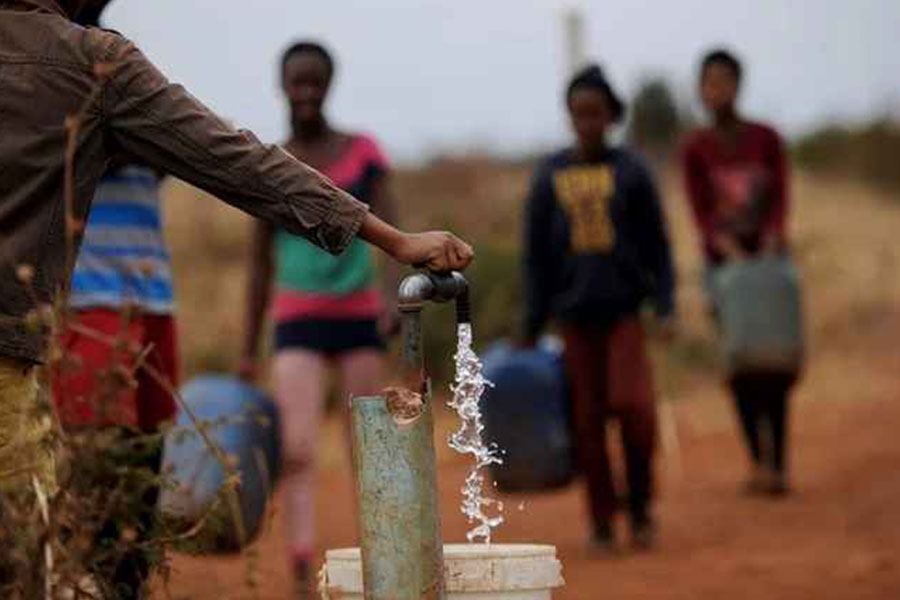
Jan 9 , 2021
By Ayele Tirfie Woldemichael (Prof.)
Regional planning is necessary for integration with the 10-year national plan that the Council of Ministers greenlighted. It addresses central weaknesses in central planning including the gap in considering the reality on the ground, writes Ayele Tirfie Woldemichael (Prof.), author of several books and an alumnus of Oregon State University and the University of Stuttgart.
The Council of Ministers has recently green-lighted Ethiopia’s 10-Year Perspective Plan. Regrettably, it is a national plan. A regional one, integrated with a broader national one, would have helped secure better results for the country.
Unlike national and sectoral growth plans, region-based planning is grounded on existing realities of regions and their communities. It is a means for charting the way forward to growth and development. Hence, production in regional development planning is resource-based, need-oriented, participative, problem solving and a pathway to development.
National or sectoral planning, also known as top-down planning, in contrast has two fundamental weak points. It has a prime focus on growth to increase national income, irrespective of distributive justice. It is also the case that, even when the National Centre is presumably guided by the long-term vision and direction of the nation it represents, it is too far and detached from the regional and local realities to have full knowledge of social problems, living conditions and institutional incompetence on the ground. It may not even closely follow the timely and effective implementation of its own plan.
Of course, regional planning itself will face challenges unless it is optimised by producing essential conditions for regional or decentralised planning. These include institutional competence at all vertical and horizontal levels and developing human capacity, especially but not exclusively at the regional and local levels. There is also the need for institutionalised research and development (R&D) at national and regional levels and people's participation and contributions as part of the process of interactive planning.
The major areas of emphasis in regional planning should be to identify social and economic problems through people’s participation with emphasis on targeting poverty, improving income, and creating the just distribution of wealth across society. There needs to be an effective utilisation of resources like land, water and labour, as well as access to social services like quality education, healthcare, improved institutional competence and developed human capital.
Focusing on agriculture is unavoidable and this entails developing rural-based industries producing farm implements, fertiliser, irrigation equipment and light construction materials like bricks. What goes with this is environmental resource protection and expansion,; careful observation of the carrying capacity of land, and urban-rural economic interactions.
Regional or decentralised development planning is often referred to as a resource procedure. The regional centre of responsibility - guided by overarching national policy goals and plans and defining its own regional goals and objectives - synthesises the region's plan at local and community levels and comes up with a regional plan. The plan reflects the region's resource potential, the needs of the people, and resource requirements including skilled human power for implementation.
The plan, which is in harmony with the national plan, becomes a veritable link between top-down and bottom-up plans and a blueprint for implementation. The interests of all will be reflected in the two plans.
This is why the first consideration in the division of the nation’s territory ought to be administrative convenience and effectiveness. A logical follow-up then is to take parts of the national territory and combine them into planning regions with the parts (forming a planning region) distinguished by the uniformity of certain identifiable criteria.
One form of criterion may be economic, in which the parts constituting a planning region need to have uniformity in the types and scale of productions, in per capita income and in common industries. Another criterion may be physical, dealing with uniformity of the parts in topographical characteristics, which may include consideration of factors such as rainfall.
The planning regions created this way meet the guiding concept of homogeneity, conceptualised in economic terms. The clear advantages of applying the homogeneity concept are the formulation of a uniform policy package, one plan, common strategies and the identification of related or complementary programmes and projects.
Also, it is necessary to consider that integrated and balanced development across geographical space requires functional linkages between the diverse components of the geographical system. Functional linkages involve linkages in economic interactions between urban centres, urban and rural sectors, and regions and between sub-regions.
The spread of development impulses in the form of goods, services, innovation, materials and human resources take place vertically down the hierarchy and, to a degree, up the hierarchy.
Another more basic form of economic linkage is between the urban and rural sectors. Here, urban and rural economies should be functionally connected to each other, serving as markets and suppliers to each other. Critical here is the reciprocity of dependence between the two spatial systems. The imperative here, of course, is that urban centres need to be transformed from being trading (buying and selling) centres to industry centres with potentials for creating wealth, job opportunities and broader economic linkages
For the rural sector to be a matching partner in the economic interactions with the urban centres, its own productive capacity needs to be developed. In this agricultural productivity and production in particular and the rural economy, in general, are vital contributors. Agriculture produces food for all and inputs for urban-based industries.
Expanding agricultural production requires increasing processing capacity in rural areas and production of farm implements, fertiliser, irrigation equipment and light construction materials at affordable prices. These also create more opportunities for employment in the non-agricultural sector. The emphasis on the rural sector and the pattern of production relations promote backwards and forward linkages, thus multiplying the range and diversity of rural economic activities.
Rural industrialisation is an important part of integrated rural development in that it creates additional employment opportunities and helps meet the basic needs of the rural population. Rural industries are less capital-intensive, small-scale and labour-intensive. The strategy of rural industrialisation makes contributions in several ways. It increases locally produced goods for the local market and utilizes local raw materials. It promotes indigenous technologies and skills, and expands backwards and forward linkages between agriculture and industries and among industries.
Rural industrialisation also contributes to the diversification of the rural economy and the provision of non-farm employment opportunities, as well as the provision of inputs to agriculture and processing of agricultural products.
Moreover, when identifying industries appropriate for rural areas, planners should consider raw material sources, human power and markets. Industries generally suitable for rural locations include those supporting agriculture and servicing rural transport and infrastructure facilities. Craft industries like pottery, the repair of looms and woodworking equipment, and industries processing agricultural outputs like crops, animal products, fish products and forest products are also included. We should also not forget those processing clay, stone and building materials.
It is comprehensive planning that considers all of these linkages - among industries and sectors as well as between urban and rural areas – that will give Ethiopia the best chance of rewarding growth leading to sustained development.
PUBLISHED ON
Jan 09,2021 [ VOL
21 , NO
1080]


Radar | Jul 29,2023

Obituary | Oct 17,2020

Radar | Aug 13,2022

Fortune News | Jul 18,2020

Fortune News | Oct 08,2022

Fortune News | May 17,2025

News Analysis | Jan 05,2020

Radar | Sep 06,2020

Fineline | Jun 14,2020

Fortune News | Apr 22,2023

My Opinion | 132151 Views | Aug 14,2021

My Opinion | 128561 Views | Aug 21,2021

My Opinion | 126482 Views | Sep 10,2021

My Opinion | 124091 Views | Aug 07,2021





Dec 22 , 2024 . By TIZITA SHEWAFERAW
Charged with transforming colossal state-owned enterprises into modern and competitiv...

Aug 18 , 2024 . By AKSAH ITALO
Although predictable Yonas Zerihun's job in the ride-hailing service is not immune to...

Jul 28 , 2024 . By TIZITA SHEWAFERAW
Unhabitual, perhaps too many, Samuel Gebreyohannes, 38, used to occasionally enjoy a couple of beers at breakfast. However, he recently swit...

Jul 13 , 2024 . By AKSAH ITALO
Investors who rely on tractors, trucks, and field vehicles for commuting, transporting commodities, and f...

Jul 12 , 2025
Political leaders and their policy advisors often promise great leaps forward, yet th...

Jul 5 , 2025
Six years ago, Ethiopia was the darling of international liberal commentators. A year...

Jun 28 , 2025
Meseret Damtie, the assertive auditor general, has never been shy about naming names...

Jun 21 , 2025
A well-worn adage says, “Budget is not destiny, but it is direction.” Examining t...

Jul 13 , 2025 . By YITBAREK GETACHEW
The Addis Abeba City Revenue Bureau has introduced a new directive set to reshape how...

Jul 13 , 2025 . By BEZAWIT HULUAGER
Addis Abeba has approved a record 350 billion Br budget for the 2025/26 fiscal year,...

Jul 13 , 2025 . By RUTH BERHANU
The Addis Abeba Revenue Bureau has scrapped a value-added tax (VAT) on unprocessed ve...

Jul 13 , 2025 . By NAHOM AYELE
Federal lawmakers have finally brought closure to a protracted and contentious tax de...